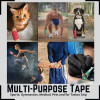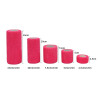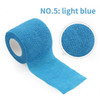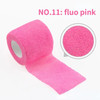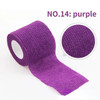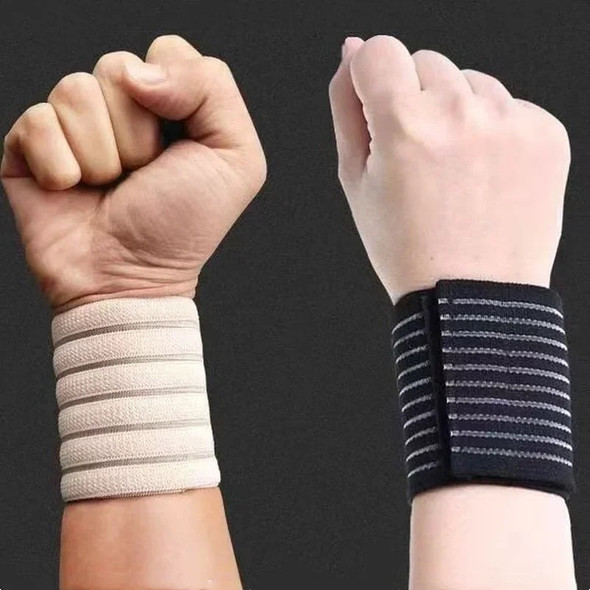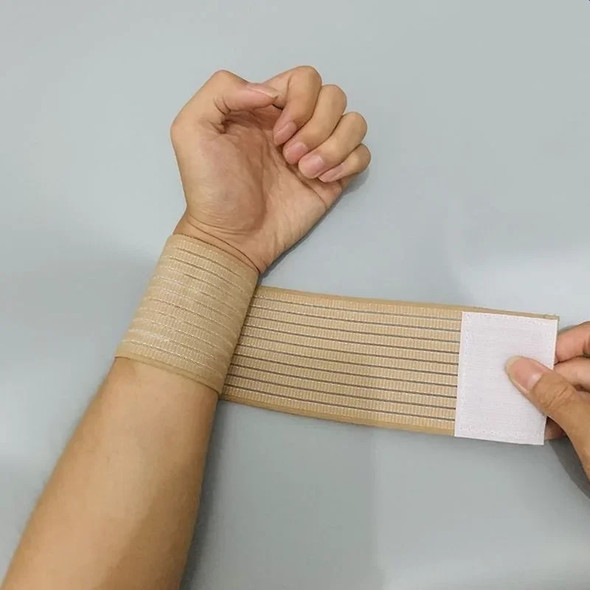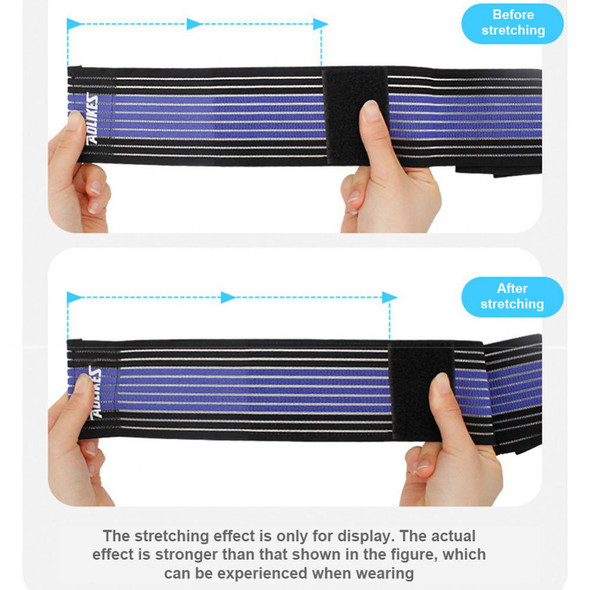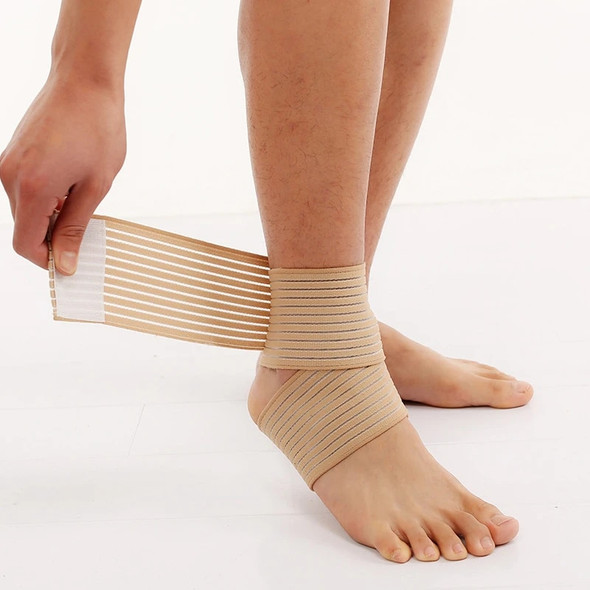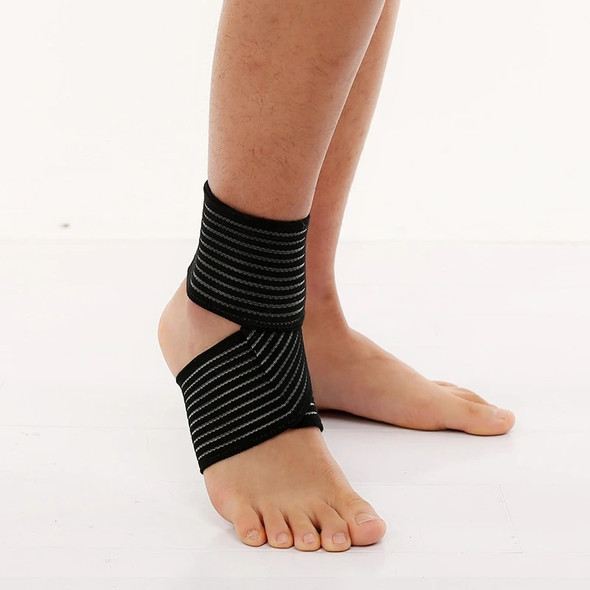Description
Elastic Bandage Sports Elastoplast Self Adhesive Tape Protect Wrist Palm Finger Arm Shoulder Knee Ankle Pets Leg Tattoo Safety





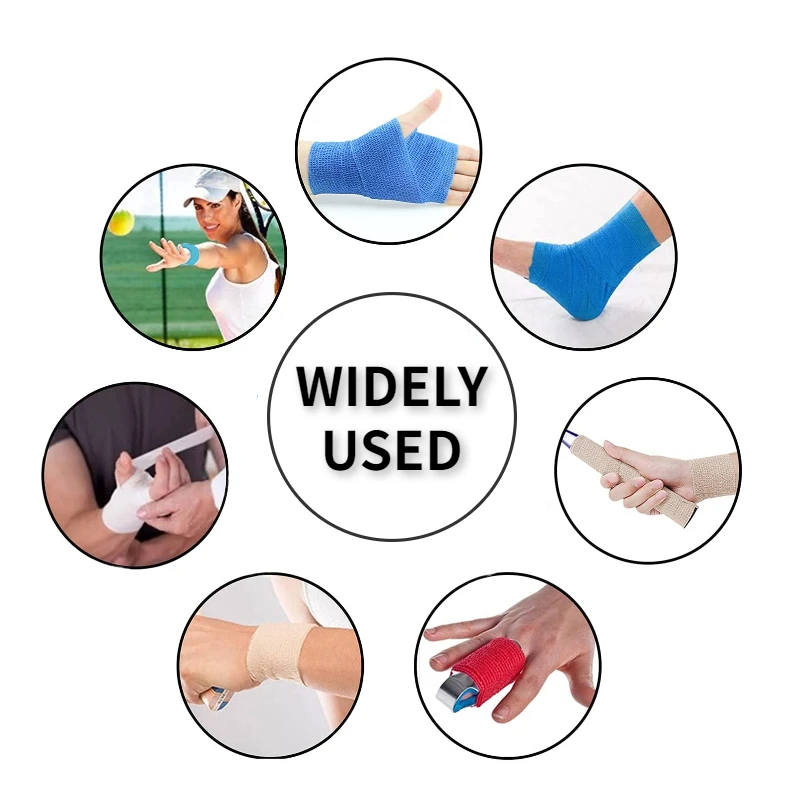

1. Ring bandaging method
It is used on small or cylindrical parts of the skin, such as hands, feet, wrists and forehead, and also used at the beginning of various bandages. Roll up the bandage, hold it with your right hand, unfold the bandage about 8cm, fix the head of the bandage with the left thumb on the part to be bandaged, and bandage the part with the right hand continuously in a ring, the number of rolls depends on the need, and fix the end of the bandage with a twisted cloth.
2. Spiral wrapping method
It is used for parts with approximately equal circumference, such as upper arm, fingers, etc. Starting from the far end, two rolls are wrapped in a circular manner, and then wound in a 30-way spiral toward the proximal end. Each roll overlaps the previous roll by 2/3, and the end is fixed with adhesive tape. When the first aid lacks bandages or temporarily fixes the splint, the bandages do not cover each other every week, which is called snake dressing.
3. Spiral anti-folding bandage method
For parts with different circumferences, such as forearm, calf, thigh, etc., first do two circular bandages, then do spiral bandages, then press the middle of the tape with one thumb, and turn the tape back from this point with the other hand Fold down to cover 1/3 or 2/3 of the previous week. Each reflexion must be neatly arranged in a straight line, but each reflexion should not be at the wound or bone prominence.
4. "8" shaped dressing method
It is used for bandaging and fixing clavicle fractures in shoulder, elbow, wrist, heel, and other joints. Taking the elbow joint as an example, wrap 2 rolls circularly in the middle of the joint first, wrap the bandage above the joint first, then wrap it under the joint through the flexion side, wrap the back side of the skin body to the flexion side of the limb, and then wrap it around the joint above the joint, and repeat this process , in the form of 8 consecutive bandages up and down the joints, each roll overlaps the previous roll by 2/3, and finally 2 rolls are wrapped circularly above the joints and fixed with adhesive tape.
5. Reverse bandaging method
For the top of the head, fingertips and skin stumps, a series of left and right or front and back bandages are performed. After covering all the bandaged parts, a circular bandage is performed.















1. Ring bandaging method
It is used on small or cylindrical parts of the skin, such as hands, feet, wrists and forehead, and also used at the beginning of various bandages. Roll up the bandage, hold it with your right hand, unfold the bandage about 8cm, fix the head of the bandage with the left thumb on the part to be bandaged, and bandage the part with the right hand continuously in a ring, the number of rolls depends on the need, and fix the end of the bandage with a twisted cloth.
2. Spiral wrapping method
It is used for parts with approximately equal circumference, such as upper arm, fingers, etc. Starting from the far end, two rolls are wrapped in a circular manner, and then wound in a 30-way spiral toward the proximal end. Each roll overlaps the previous roll by 2/3, and the end is fixed with adhesive tape. When the first aid lacks bandages or temporarily fixes the splint, the bandages do not cover each other every week, which is called snake dressing.
3. Spiral anti-folding bandage method
For parts with different circumferences, such as forearm, calf, thigh, etc., first do two circular bandages, then do spiral bandages, then press the middle of the tape with one thumb, and turn the tape back from this point with the other hand Fold down to cover 1/3 or 2/3 of the previous week. Each reflexion must be neatly arranged in a straight line, but each reflexion should not be at the wound or bone prominence.
4. "8" shaped dressing method
It is used for bandaging and fixing clavicle fractures in shoulder, elbow, wrist, heel, and other joints. Taking the elbow joint as an example, wrap 2 rolls circularly in the middle of the joint first, wrap the bandage above the joint first, then wrap it under the joint through the flexion side, wrap the back side of the skin body to the flexion side of the limb, and then wrap it around the joint above the joint, and repeat this process , in the form of 8 consecutive bandages up and down the joints, each roll overlaps the previous roll by 2/3, and finally 2 rolls are wrapped circularly above the joints and fixed with adhesive tape.
5. Reverse bandaging method
For the top of the head, fingertips and skin stumps, a series of left and right or front and back bandages are performed. After covering all the bandaged parts, a circular bandage is performed.

































